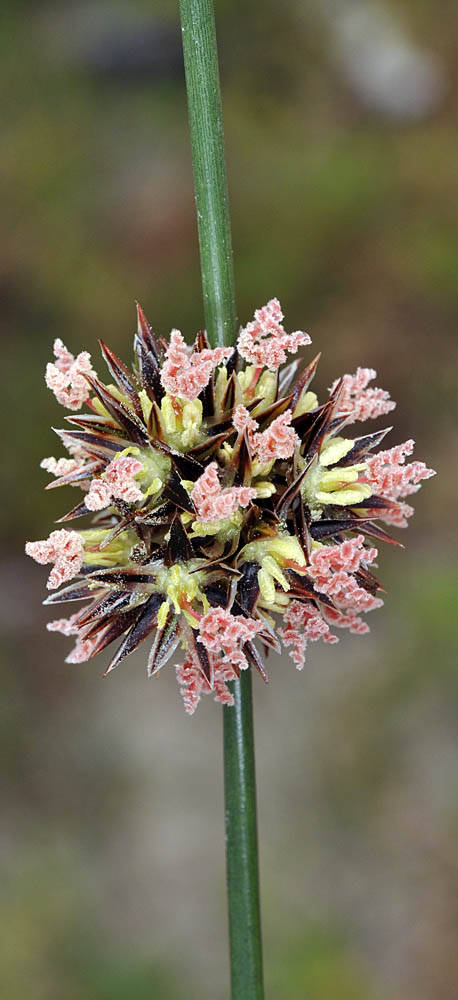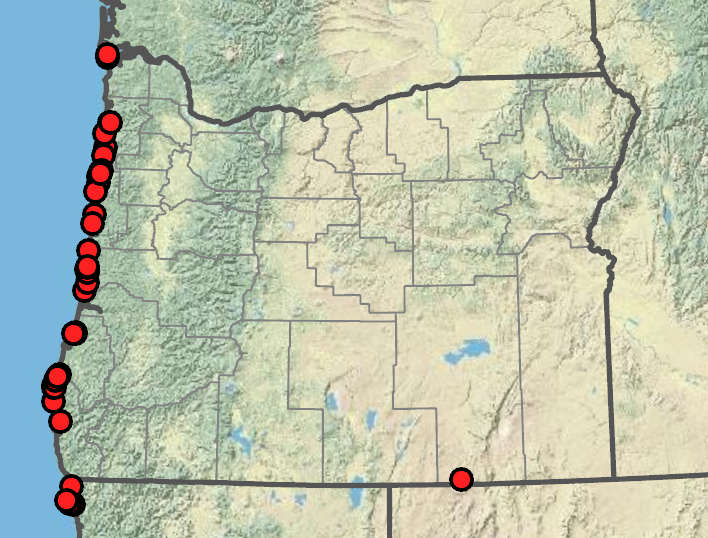|
San Francisco rush
|
| Plants perennial, 40–140 cm tall, rhizomatous, fresh stems usually round and erect, usually not twisted, smooth, with 12–30 weak ridges visible per side when dried. |
lacking blades; distal sheaths 5–12 cm, green to dark brown or blackish distally; dull or slightly shiny; smooth; apex symmetrical; thin, not winged. |
variable; a loose or sparse cluster, often lobed; at least some branches usually visible; inflorescence bracts not swollen. |
tepals 6, usually 6–8 mm, dark brown-striped; stamens 6; filaments 0.3–0.9 mm; anthers 0.9–2.3 mm; styles 1–1.8 mm. |
4–5 mm; shorter than the tepals, dark brown; apex acute, 1-chambered. |
0.6–1.1 × 0.4–0.6 mm, often silvery, apiculate. |
|
|
|
|
|
Damp dunes, sandy shores, coastal fresh-water marshes. 0–50m. Est. CA. Native. This species is identified by the large flowers typical of J. breweri and the more open inflorescence found in J. balticus. It is possibly derived from hybrids between those two species and often grows with them. It was long thought to be endemic to the San Francisco Bay area (Lint 1977). |
Flora of Oregon, volume 1, page 280
Peter Zika |
J. acuminatus, J. anthelatus, J. articulatus, J. balticus, J. bolanderi, J. brevicaudatus, J. breweri, J. bryoides, J. bufonius, J. bulbosus, J. canadensis, J. capillaris, J. capitatus, J. compressus, J. confusus, J. conglomeratus, J. covillei, J. diffusissimus, J. drummondii, J. dudleyi, J. effusus, J. ensifolius, J. ensifolius x Juncus nevadensis, J. exiguus, J. falcatus, J. filiformis, J. gerardi, J. hemiendytus, J. hesperius, J. howellii, J. inflexus, J. interior, J. kelloggii, J. laccatus, J. longistylis, J. marginatus, J. mertensianus, J. mexicanus, J. nevadensis, J. occidentalis, J. orthophyllus, J. oxymeris, J. parryi, J. patens, J. pelocarpus, J. planifolius, J. ranarius, J. regelii, J. saximontanus, J. supiniformis, J. tenuis, J. tiehmii, J. torreyi, J. triglumis, J. trilocularis, J. uncialis |
|

